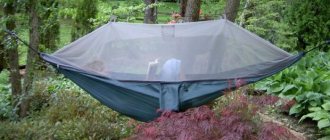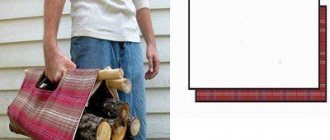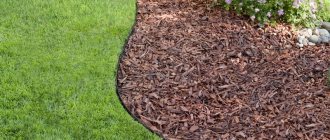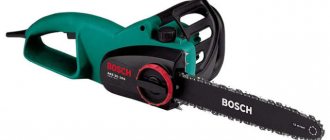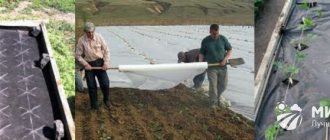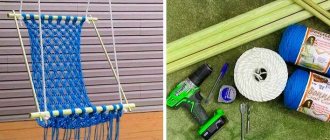The word "hammock" comes from the Spanish hamaca, which means "fishnet" The origin of this wonderful item is obvious, as is its original use - nets were used for sleeping on ships to reduce rocking (and, in fact, to prevent rolling on the floor), not to get wet if water was splashing on the floor, and to sleep out of reach of rats. Naturally, in maritime civilizations (primarily Spanish-speaking), hammocks quickly migrated to the shore. They have become extremely popular in all Spanish-speaking countries of Central and Latin America, where they are used as bed, chair, swing and cradle. But it’s not just the letter “k” that begins the amazing properties of this wonderful item. In cold areas, a hammock is also a substitute for tents when spending the night in the open air, and blankets - because you can wrap yourself up in it (in the mountains they are made not from nets, but from thick woolen fabric). Hammocks evolved, spread from culture to culture along sea routes, unfortunately China became interested in them (with all the consequences for the hammock market of the rest of the world). Well, here we will try to show that a hammock can be useful, wonderful and functional as a piece of equipment at a sports complex (or next to it). But let's start in order. Types of hammocks.
What types of hammocks are there?
A. By type of weaving 1. Rope hammocks 2. Fabric hammocks 3. Camping hammocks 4. Mayan hammocks 5. Nicaraguan hammocks 6. Brazilian hammocks 7. Quilted hammocks
B. By type of fastening / suspension 1. Hammock with stand 2. Wooden hammocks 3. Swing 4. Portable folding hammock 5. Hammock with canopy 6. TearDrop Hammock
B. Other Features 1. With spreader bar 2. Yoga hammock 3. All-weather hammocks and pool hammocks 4. Hammocks for two 5. Reversible hammocks
D. By material 1. Natural (cotton, wool) 2. Synthetic (polyester, nylon).
Dimensions and strength of the product
In most cases, a good hammock can withstand a load of up to 130 kg. In this case, we advise you to focus on the height and weight of the user, as well as how many people will be located on the canvas at the same time. The supports and frame are also responsible for the spaciousness and strength of the product.
The design dimensions come in a variety of variations, but the best option is 2 meters in length and 1.5 meters in width. We also recommend purchasing a hammock with a small margin. This way it will last longer and guarantees safe operation.
A. Classification of hammocks by type of weaving
Rope Hammocks
A cotton rope hammock with spreader bars is the standard image of a hammock in our culture.
Origin: Caribbean countries. Such a hammock can be placed outside the country sports complex, for example, stretched from one of the supports to the wall of the house as a “VIP box for parents.” Children usually prefer hammocks without slats because they are more suitable for climbing, hiding, playing and they are more flexible. If you think of a hammock, the first thing that comes to mind is the image of a rope hammock. This is a popular image in pop culture and you've probably seen it on TV more than once. This is a traditional hammock, many of them are now made from polyester, but historically this type of hammock was made from cotton. Rope hammocks are often hung between two trees and this will also immediately come to mind if someone says that they are going to relax in a hammock. Often rope hammocks are made with slats, so-called “spreader bars”. For the uninitiated user, these slats make the hammock easier to use: the slats separate the sides, making it easier to get in and out of the hammock if it is hung correctly (at a comfortable height, well tensioned, with enough distance between the slings). Of course, when rolled up, such a hammock will take up more space: it rolls up into a kind of roll around the slats. Unfortunately, synthetic hammocks have recently been replacing cotton ones as they last longer outdoors and are more durable. They have no problems with mold: polyester is resistant to it. Cotton is more flexible and breathes better. Of course, this is a matter of personal preference. You just have to think about how you intend to use the hammock and whether mildew resistance is necessary for your situation. From our point of view, cotton is definitely better for the home; for the dacha, you can consider options. In any case, you will remove the hammock hanging outside for the winter, but if the summer is humid, of course, you may prefer an option that will not be afraid of rain when hung separately on the street or at an outdoor sports complex. A rope hammock is well suited for use inside a sports complex if it does not have distribution bars and only outside if there are such bars (with climbing bars it has little functionality, takes up much more space and interferes with other equipment). In general, for an apartment, balcony and other places where space is limited, it is better to use a hammock without slats. Once you get used to using it, you find that it is more comfortable and gives more options than a hammock with slats, the position of which is more predetermined. In Russia you can buy beautiful natural (cotton) Mexican hammocks, they bring them to us, they really won’t be cheap (about the same as a wall bars), but they are worth it.
Woven Hammocks
Fabric hammocks are the second most common in the world after rope ones.
Many people will prefer a fabric hammock because it is very comfortable and beautiful. A good fabric hammock is usually made from cotton or wool mixture (wool + cotton, wool + acrylic). The comfort of a hammock will be determined not only by the material, but also by the weaving of the threads. The hammock must be elastic diagonally (jacquard weaving), so all the options for cheap Chinese hammocks made of synthetic materials or tarpaulin, sold in the sections of summer cottage goods and not having elastic weaving, can discourage the use of hammocks forever. Don't fall for it! Try a hammock made of comfortable fabric and it will become your favorite. A good fabric hammock should be made from a special diagonally elastic weave ; this is what ensures its flexibility and comfort. The weave of the fabric produces a different pattern on the top and bottom sides, making them even more beautiful and allowing both sides to be used. These hammocks also come with or without side spreaders. This hammock is more comfortable in cool weather than a net hammock, so it is very good for use in the middle zone both at home and outdoors. They are sometimes sold with stands, but most often they are intended to be attached to trees or hooks in walls. People with children who hang such a hammock in their home will be surprised at how comfortable and functional it will be. You can simply relax, watch a movie or read a book with your children in such a hammock. You can sit there with your baby and rock him to sleep if he can’t sleep, and it’s much easier than rocking him to sleep on a fitball or in your arms. It is more comfortable to rock a baby in fabric hammocks than in net hammocks, because they are solid and there are no holes where the child can stick a finger or some small object.
It’s good to rock a child in a fabric hammock while sitting with him, but you can also rock him by putting him there alone. It is safe for a baby in a hammock if you place it across, and not along, the hammock. It’s more comfortable (the sides don’t overhang) and safer (you won’t roll off). Older children use the same position (only sitting) when they swing in a hammock like on a swing. A hammock without slats is better suited for this.
An older child can hide in a hammock and relax or, conversely, swing like in a swing. He will be able to independently climb into and out of such a hammock at the age of about 1.5 years, if the hammock is hung low. If fastenings in the walls are used through carabiners, the hammock can be unfastened in a few seconds if you need to clear the passage. This hammock will fit perfectly into a sports complex. For all these purposes and for use in an apartment, a hammock without distribution bars is better suited.
Camping Hammocks
Today's high-tech camping hammocks aren't all bad.
Treated sports fabrics have their advantages: they breathe (this needs to be checked), dry quickly after rain, and provide a little warmth and a little protection from the wind in cool weather. The prototype of such hammocks were woolen and wool-blend fabric hammocks used in the mountains of Latin America. You can try using such a hammock at or near a sports complex. Camping hammocks are a product of modern civilization. They are very common, useful and popular. These are hammocks, usually sold in sports equipment or outdoor supply stores. They are less environmentally friendly than hammocks made of jacquard fabric, but they take up little space and dry instantly. If you do not have the opportunity to buy a real jacquard weave fabric hammock or a handmade Brazilian fabric hammock, you have a small budget and prefer fabric hammocks to chains, then it is better to choose a camping hammock in specialized sports stores, but do not buy a Chinese canvas hammock in gardening stores and at home, their comfort is incommensurable. You will use this one, it will never come to life. Camping hammocks are positioned as hammocks for overnight stays in nature, sometimes as a replacement for a tent. This is a very light hammock made of synthetic fabric, compact and easy to take with you, no matter whether you are traveling by car or hiking with a backpack. Portability is their main advantage. The hammock is attached to two trees located at a given distance from each other (usually supports are needed at a distance of 3-4 meters). There are more bulky options that come with hanging or stand options.
Mayan Hammocks
Air weaving distinguishes Mayan hammocks.
They can be woven from the finest threads and are very strong and reliable. Mayan hammocks are distinguished by a special weaving - very dense. This makes them incredibly durable (they are designed for a load of 250 kg with a dead weight of about 1.5 kg), while being lightweight and breathable. That is, if it is important for you that the hammock can withstand increased load, then it is better to choose Mayan weaving. They are woven in very large sizes (length 4 meters, width 2 meters) - an adult can easily and comfortably lie across in such a hammock, fully stretched out. This is exactly how (across) these hammocks are very physiological for sleeping. Mayan hammocks are often called double or family hammocks because they comfortably fit two adults. Typically, Mayan hammocks are made in very bright colors to be visually attractive. They are so beautiful that they can even decorate the interior of an apartment. And surprisingly durable, despite their naturalness and lightness, although sometimes they are still woven not only from cotton, but also from nylon. The thread itself can be thinner or denser, and this is important because thinner thread can be damaged if it gets caught in a zipper or button on a garment. Mayan hammocks are not made with slats, but they are easy to use and stable even for inexperienced people, despite this. An excellent option for both home and garden, and for use inside or outside the sports complex.
Nicaraguan Hammocks (Mayan Hammocks)
Very strong and picturesque Nicaraguan double weave hammocks.
Nicaraguan hammocks are distinguished from other types of hammocks by their complex type of double weave . They are woven exclusively from soft cotton cords. The brightness of their colors is similar to Mayan hammocks, but they differ in the shape of the weaving. Both of them (in the “lying” type of suspension) are among the most comfortable existing on Earth and are suitable for night sleep. Cotton Nicaraguan hammocks are not thought to be durable when used outdoors, so they are either covered in bad weather or used indoors.
Brazilian Hammocks
Thicker woven Brazilian hammocks work great in our conditions.
Their colors are not necessarily so light; they can also be in bright and rich colors, and in moderate ones. Brazilian hammocks are handwoven hammocks They look great and are very comfortable. Excellent for outdoor use in summer in our climate (in tropical countries they are good in shady places and on cool nights; in the sun they are hotter than their rope counterparts). A place on a shady veranda is ideal for them. They are cozy and come in a variety of sizes and colors. There are standard, large and extra large woven Brazilian hammocks that can comfortably accommodate several adults. Their edges are often trimmed with lace or threads of different weaves. These hammocks are safe for children and children are safe for them - because they are more difficult to break or snag than rope ones. This is a sturdy hammock and provides better protection from the wind when outdoors. As a rule, Brazilian hammocks are made without slats, but you can also find a Brazilian hammock with slats if this is a fundamental issue.
Quilted Hammocks
A kind of mattress on a suspension, a quilted hammock has a shape specified by stitching. The civilized version has little relation to its “wild” relative, at least because it will not so plastically and physiologically repeat the shape of the body.
The stitching combined with the spreader bars clearly defines the shape of this hammock. Since in this form it loses its plasticity, such hammocks often come with a pillow.
These hammocks are often made large and sturdy to accommodate two people or to give one person plenty of support. Then some additional flexibility can be added from the ability to sit diagonally in this hammock. Contrary to common sense, molded hammocks are not always more comfortable. It’s worth at least trying several options (quilted and soft, with and without trims) before choosing. You need to try hammocks correctly and firmly suspended.
Hanging
Hanging hammocks for cottages are the most popular type. Due to their simplicity, such hammocks have an affordable price, so anyone can buy them. This option is suitable for those who are not looking for something sophisticated, but just want to make a cozy place to relax.
Such products are made from durable synthetic materials. Modern models have a waterproof bottom and a mosquito net. Having this latest improvement will be especially useful for those who plan to sleep outdoors, so mosquitoes won't be able to get to you.
Hammock chair
Installing hanging hammocks does not require much effort. It will be necessary to select trees of suitable thickness that are located close to each other. Using a carabiner and tension parts, the suspended structure is securely attached to the trees. If there are no plants with powerful trunks on your territory, strong pillars will suffice.
Hanging chair-hammock for a summer residence
B. By type of fastening / suspension
Hammock with its own stand
Obviously, in this form, the hammock becomes a kind of piece of furniture.
In a sporting sense, it becomes inconvenient. This is a good country option for a clearing or veranda where there is a lot of space. There are hammocks that are sold with their own stand. This makes them easier to use if you don't have suitable posts or trees outside. This also allows you to use the hammock indoors as an analogue of a chair or sofa, without hooks or other fastenings.
Hammock for hanging from poles/trees
Here, along with the hammock, nothing extra is provided: only the hammock itself, which can be extended with ropes to hang it from a tree, pole or hook in the wall and equipped with carabiners to quickly unfasten it and fasten it back.
A hammock of any type of weaving suspended by ropes and carabiners without distribution bars is exactly what we can use inside any sports complex: country house or apartment. The hammock is soft and even if you catch it while swinging on some projectile, you won’t hit it, it will simply roll to the side. It can be included in climbing routes, but it can also be unfastened if at some point it seems unnecessary and is in the way. Moreover, as a rule, such a hammock does not need to come up with separate fastenings at the sports complex: any rack, crossbar or wall bars will do. Of course, at the dacha, where there is usually plenty of space, you can hang a hammock next to the sports complex; this is your individual decision.
A European person, seeing such a mount, decides that it is not for home. The judgment is strange, because in fact, to hang such a hammock in an ordinary apartment, you only need two hooks in the walls, but if it gets in the way, then after use, it can be unfastened in a couple of seconds. This is exactly how hammocks are used in the Caribbean to sleep on the patio on hot nights. They make an excessive number of hooks on the walls and a person can come with his own hammock and sit in a convenient place. In Central and Latin America, hammock hooks are sometimes made on hotel balconies or on common verandas: a person comes with his own hammock and hangs it, it is personal and therefore more familiar/comfortable/clean. These hammocks are also good for use on large open verandas. They can be with distribution bars or without them, it doesn't matter.
An option for attaching a hammock to a semicircular veranda.
This fastening is good because it is not stationary: the hammock can be hung in good weather and removed in bad weather or if the space is needed for something else. Similarly, you can hang a hammock in your home using hooks and carabiners. If necessary, the connection can be extended with rope loops. The optimal distance between the supports for such a hammock suspension is from 3 to 4.5 meters, depending on the length of the hammock. If the hammock is large in length (4 meters as in the case of Mayan hammocks), the fastenings can be placed higher, the hammock becomes semi-sitting. It is easier to sit in such a hammock than in one stretched strictly horizontally. A large hammock retains the ability to lie straight if used in a transverse position.
This photo shows the fastening: a hook in the wall and a carabiner that allows you to easily unfasten the hammock if necessary. This need, by the way, rarely arises: children know how to walk by stepping or sitting under a hammock and use it as often as possible - dozens of times a day. So usually the next chair is standing unused. In our experience, it is better to move the flower further away from the hammock.
If there is no space in the apartment to hang a “lying” hammock, then for children you can hang it with a loop or choose a sitting model, and this requires one hook in the ceiling or beam.
Hammock swing / Hammock chair (Swing Chairs)
Although any lying hammock can be hung with a loop and made into a sitting one, there are hammocks specially woven “under the chair”, they are distinguished by asymmetrical weaving. The weaving of the thread itself (simple, Mayan, Nicaraguan, woven Brazilian) can be any in such a hammock. With any type of elastic weave, such a hammock will be extremely comfortable. It makes it possible to distribute your weight very plastically. For use by children or people who are not accustomed to hammocks, it is enough to hang such a “chair” low and there will be no problems with using it.
These Nicaraguan weave hammocks have an asymmetrical suspension that creates a higher "back". They are designed for a sitting position. Moreover, the weaving is so elastic that an adult can sit in such a hammock and fully stretch his legs in it. It is these sit-on hammocks that are comfortable and environmentally friendly, rather than rigidly molded chair hammocks stuffed with foam rubber. A rope or woven hammock suspended from a stick can be easily washed by removing it from the stick.
This type of hammock can be used inside or near a sports complex. This is also a hammock for which it is easiest to find a place in an apartment; it needs about 1 square meter, although if a child likes to swing a lot, in dynamic mode it is better to leave him more space on at least one of the axes.
A sitting hammock gives both an adult and a baby the feeling of a cocoon or womb. He is highly psychotherapeutic. This hammock replaces a swing in a children's sports complex, but can also be used as a flexible crossbar on which a child can hang. It is so comfortable that you can fall asleep in it. It is excellent for rocking a baby to sleep (if you pick up the baby and sit in it together). At night in the dark, it can give the mother rocking her baby an incomparable experience of being together in the womb.
An attempt to combine the idea of a chair and the idea of a suspension led to the appearance of many hanging seats. Strictly speaking, they are not hammocks, although in fabric forms they are sometimes vaguely related to hammocks. Swing chairs can be wicker, can have their own stand or be unsupported, and can even be a large piece of furniture (like a bed or sofa) suspended. But this is a different genre.
Swing chairs exist in many options from fabric to wicker, from the “economy” category to the “luxury” category. At the same time, a molded fabric swing chair, like the one photographed in the picture on the left, will never be able to compare in comfort and plasticity with its “ancestor” - a rope or woven hammock.
Portable Folding Hammock
This is an analogue of folding chairs in the hammock industry - a logical continuation of the idea of camping hammocks. If we take a hammock with us, why not make a folding support for it? Suddenly, it seems like you won’t see any pillars, walls with hooks, or trees...
You can take the “carry everything with you” idea to the extreme and add collapsible portable supports to the hammock. The comfort of the system as a whole will be determined by the material and elasticity of the fabric part and the stability of the supports. This is a simple, unpretentious tourist option.
Hammock with Canopy
If the hammock can come with its own support stand, why not add protection from rain or sun over it? Or even equip it with a full-fledged canopy to protect it from insects? These hammocks are usually very large and are made so that a couple or family can sit comfortably together in the sun or rain without unnecessary disturbance. In the camping version, the canopy turns into an awning and you can sleep in a hammock without fear of rain.
A stationary version of a hammock with an awning for a summer house, country house or mini-hotel.
And here is a camping version of a hammock with an awning: some manufacturers supply them as a set. Although any tent purchased separately, suspended over a hammock, can be used in this way. But it becomes more clear how you can use a hammock instead of a tent, even in our conditions.
TearDrop Hammock
Literally translated, TearDrop hammock means “tear.” These strange drop-shaped hanging systems in the civilized world often exist in a wicker version. However, their modification shows that they have a distant historical relationship with the hammock. Actually, the idea here is to combine a hammock and an awning in one design.
TearDrop hammocks in a camping version.
B. Other Features
Hammocks with Spreader Bars
Hammocks with a distribution bar are quite popular. They require more space when hanging and carrying, but they clearly hold their shape, as a result, it is easier to lie in them for people who have little experience, although such a hammock, if hung incorrectly (pulled too tightly, for example), can tumble. In their countries of origin, hammocks can usually be purchased with or without a bar. The disadvantage of such hammocks is that they are more difficult to wash. Any ordinary hammock can simply be washed in a washing machine (on a delicate cycle), but this design will have to be washed by hand.
Distribution bar on the hammock.
Yoga Hammock (Poolside Hammocks)
A yoga hammock is distinguished by its shape, suspension and (usually) the presence of additional fabric loops or handles. This allows you to do various asanas and hangs in the air in such a hammock, roll over and stretch. Such a hammock is suspended from the ceiling on two supports. The use of hammocks led to the emergence of a separate type of yoga designed for this purpose. The yoga hammock is specially very flexible and is well suited for use inside a home or country sports complex.
A yoga hammock is suspended from the ceiling on two supports. It allows you not only to lie in it, but also to hang upside down and in other various positions, as well as stretch in every possible way.
Yoga hammocks are usually made from thin synthetic fabrics that are very tear-resistant and are equipped with fastenings with a safety margin (calculated for the weight of three adults). Despite their apparent compactness, their panels are made large enough so that you can lie completely across them.
Fabric handles are sometimes replaced with denser ones, as a rule, there are three of them in height. Yoga hammocks are designed for exercise and fit is important, so they come in a variety of sizes for adults and children.
Weatherproof Poolside Hammocks
It would seem obvious that on vacation in the summer they like to swim and sunbathe, in general, to relax, and a hammock just relaxes, and the combination of two relaxing factors in one place is very environmentally friendly. That's why there are hammocks specifically designed to be hung near pools.
A pool hammock can be rope or fabric, but its main feature is that it is mold-resistant since people are expected to sit on it while wet.
They are made from mold- and rot-resistant fabric, since the pool will have more humid air and people will sit on it after swimming. Such hammocks are usually bright or, on the contrary, eco-friendly colors. They are often sold with distribution bars and stands to allow them to be hung free from walls and trees. It is recommended to clean them frequently with warm water and soap. They are made from fabrics that can withstand cleaning well (unlike hammocks without spreaders, which can simply be washed in the washing machine). These hammocks are suitable for constantly hanging outside, that is, they are considered all-weather. Although many traditional hammocks made from natural fabrics can also withstand several seasons of constant outdoor use, due to the fact that they dry out very quickly when wet, the service life of natural fabrics in such conditions is usually still lower.
Hammock for two (Two-Person Hammock)
A hammock is a great place to be together, or even together with small children.
Regardless of the material and type of weaving, there are hammocks specifically designed for two people. These hammocks have a durable weave and are designed to carry the weight of two adults, allowing you to sit or lie there very comfortably. Please note that not only the hammock itself and its fastenings must be reliable, but also the ropes attached to the support. Sometimes a hammock can fall due to the fact that these ropes fray, so for large weights they are additionally strengthened or duplicated.
Reversible Hammocks
Reversible hammocks are simply a design option where the hammock has a different color and can be used upside down or upside down when flipped over. As a rule, one side is motley, the other is plain. However, manufacturers distinguish them into a separate category.
With frame
A hammock for a summer house with a frame is no less popular than the previous model. A special advantage is that it can be placed anywhere. There is no need to look for suitable trees or install poles; thanks to the frame structure, such a hammock can easily be located in any place you like. This could be a garden or a wide porch of a house, a gazebo or a tent. Stationary structures weigh about 15 kilograms, the frame is made of high-quality metal tubes. Often transporting such a product will be problematic.
Round hammock for the garden
But you can even take a prefabricated hammock with a frame with you on a fishing trip. This model is not very stable, since it is made of light metal, but it is easy to disassemble and fit into the trunk of a car. Ideal for short trips to nature (picnic, forest, beach). Hammocks with frames come in a variety of shapes, colors and sizes.
Hanging lounger for a summer house
D. Classification by material
Natural (Cotton Material)
The most popular material for hammocks is cotton, but wool blends and wool weaves are also available in cold regions. Cotton breathes, it is flexible and pliable and many people exclusively accept cotton hammocks. Cotton is more susceptible to mold than its synthetic counterparts, so this hammock should be handled more carefully and removed during prolonged rains and humid weather. At the same time, if the hammock gets wet and quickly dries in the wind, then no problems arise.
Synthetic (Polyester & Nylon Material)
The two main types of synthetic fabrics used in hammocks are nylon and polyester. In the case of polyester hammocks , it is important to take into account that for comfort and flexibility, the weaving is primary, and not the material; it is the correct weaving of both rope and woven hammocks that will determine its convenience, comfort and plasticity, because even the most complex types of weaving, for example Mayan weaving or Nicaraguan double weaving, used on synthetic fibers. This is done so that the hammock will last longer if it is hung outside and used in wet conditions. It will be less pleasant to the body and less breathable, but it will wash well and be comfortable. Yoga hammocks are usually made mixed (cotton + polyester) to add strength to the fabric, while maintaining some of the naturalness that is important in the yoga environment. If in your city only a polyester version of a hammock made in China is available, not elastic and rigidly attached to a bar (the worst possible profanation of the idea of a hammock), then try buying a nylon hammock from a sports store instead. It will give a more accurate idea of real hammocks at a reasonable price.
Nylon hammocks are popular in the hiking (tourism) industry. When a hammock is considered as an analogue of a tent, its weight is primary, it is necessary that it be very compact and dry instantly, then nylon is a normal alternative. Nylon is also less susceptible to rotting and mold; hammocks made from this material are not expensive and easy to buy.
History of creation
The first versions of hammocks appeared in South America. The Indians came up with this structure to protect against snakes. However, over time, they realized that this method is very convenient for relaxation and sleep. Hammocks were brought to civilization by sailors who explored America. It was they who popularized hammocks in Europe, and indeed throughout the world.
Now the production of this product has been put on stream; there are different types that differ in the method and material of manufacture, purposes and places of use. Some regions have their own established traditions of creating hammocks. Similar designs are actively produced and sold at a variety of prices.
Summary. How to choose a hammock and start using it
- Do not buy Chinese-made hammocks in garden and home stores - you will be disappointed in this item forever. Even there is this safe-looking fabric hanging chair, it has nothing to do with what the word “hammock” is called. It is difficult to imagine a person who would be satisfied with these items; they have neither flexibility, nor comfort, nor environmental friendliness. But they can make you make a mental note: “A hammock is not for me.”
- If you're traveling in areas where hammocks are popular and widespread, primarily in Central and South America, try hammocks wherever you can. Many shops in these countries have hammocks that are hung up and you can try them on the verandas, balconies and gardens of small hotels. Try everything you can. You will be surprised how you ever lived without a hammock. Bring yourself a few different options. There it will seem that it is simple and natural; in Russia you can get the same hammock for 2-5 times more expensive, if at all. If your friends are traveling to this region, ask them to bring it. This is especially true for hanging hammocks-swings (hammocks-chairs) - they are almost never available in Russia, only on order. Please bring a rope or woven unmolded hammock swing (without foam rubber, without a rigid shape). It can be disassembled, you can pick up a stick from it in Russia, but the hammock itself will easily travel in your luggage, its weight is about 1.5 kg.
- If you live in Moscow, try Mexican Mayan weaving hammocks , they are now being brought to us and they are usually even in stock. There are discounts on some colors so you can get one of the best hammocks in the world. If you need a hammock for your apartment, choose a natural one, for example, cotton. Many real hammocks can be ordered on Amazon; we deliberately left English names here so that you can navigate the catalogs. If you don’t know where to find them, write to us.
- If you don’t have access to a supplier who carries rope or woven stretchy weave hammocks, and don’t have friends who travel to Central or Latin America, and you don’t know how to use Amazon, then don’t buy domestic or Chinese non-stretchy alternatives, try nylon camping hammock , which can be purchased in stock or ordered with delivery to any city in large chain sports stores. This is a very practical and very cheap option. It will not decorate the house, it is more suitable for the forest or the street, but there you can feel that it has a certain feature. And your children will appreciate it. These same hammocks are well suited for recreation areas of private hotels.
- If you are afraid of falling from a hammock, find someone who is comfortable using one and ask them to show you how to safely sit or lie down on it . There are some little tricks. If you understand them, you may prefer a simple hammock without spreader bars.
- Finally, you can try a large hammock with a spreader bar , which creates a feeling of reliability even for those who have considerable weight and have no experience using hammocks in general. Don't stop there, try a Mayan weave hammock if possible.
ShellsHammock
Bottom line
When choosing a hammock for your home or cottage, you need to start from the available space, as well as personal preferences. For large areas, frame models are used, which have a stylish look and can be used by several users at the same time. Small hanging models can be used comfortably in the garden, and make daily relaxation not only enjoyable, but also healthy. The rating of the best hammocks for home and garden for 2022 allows you to study popular models that have a large number of positive reviews from users.

